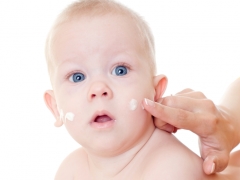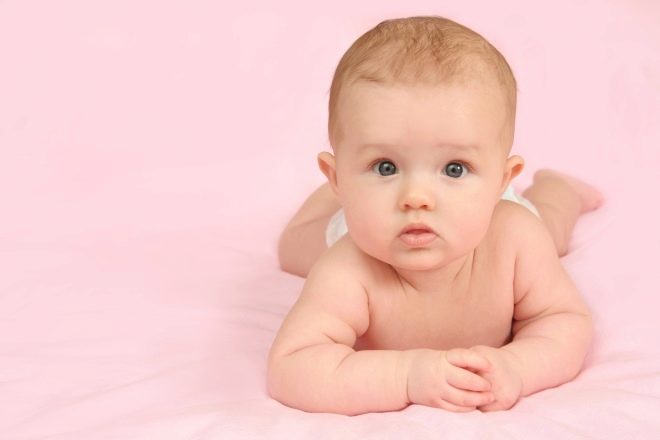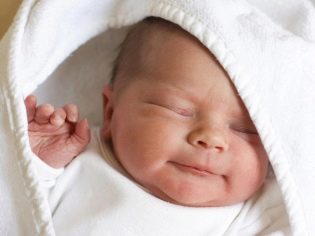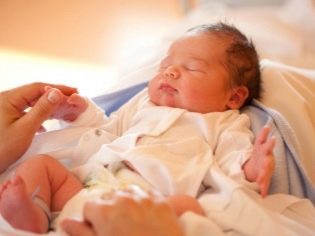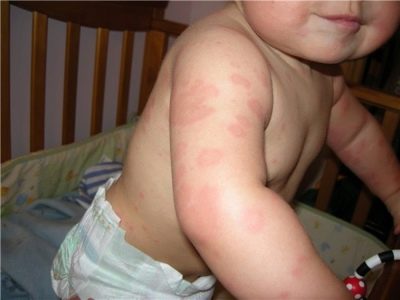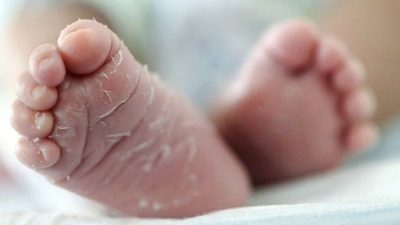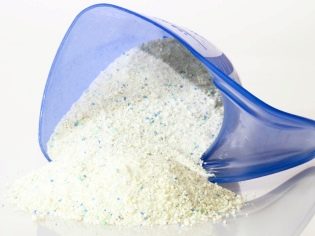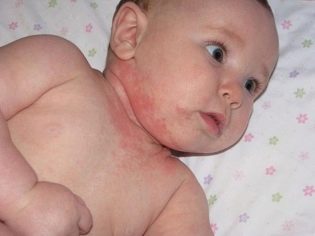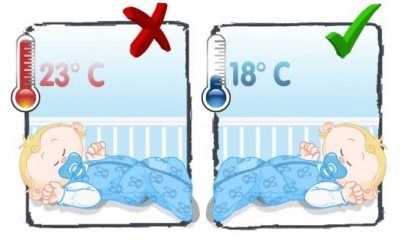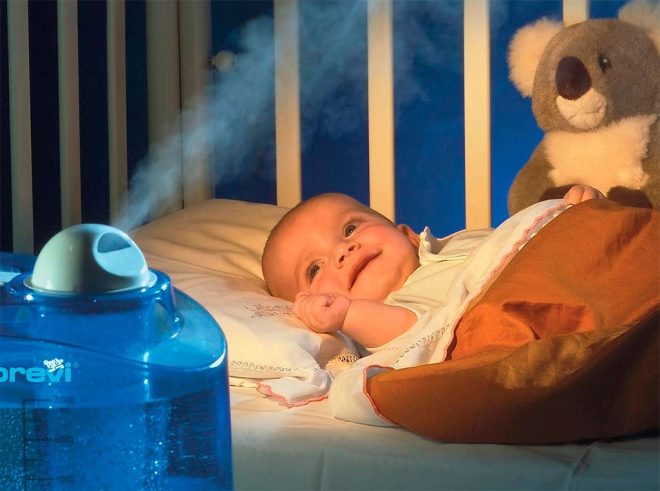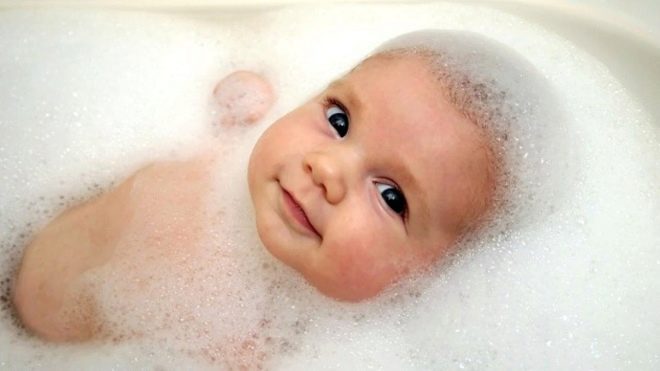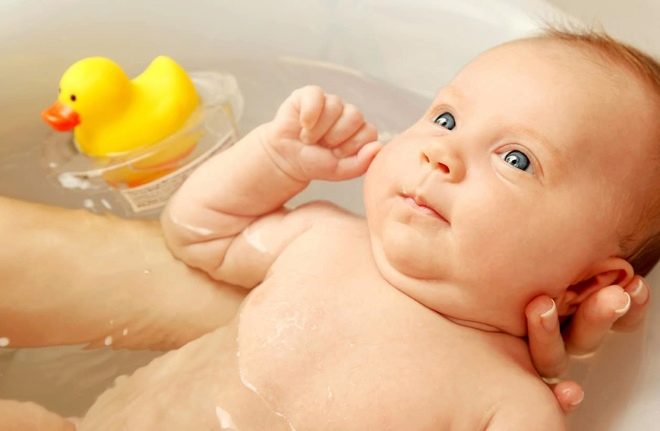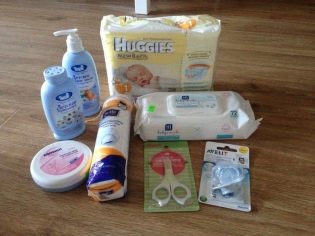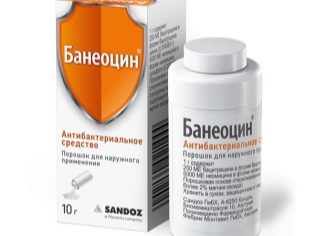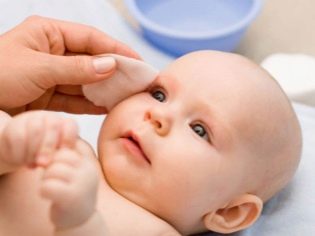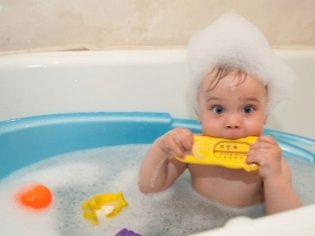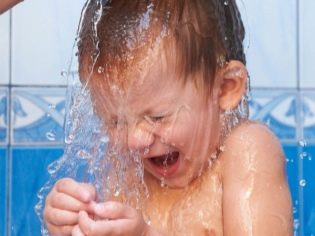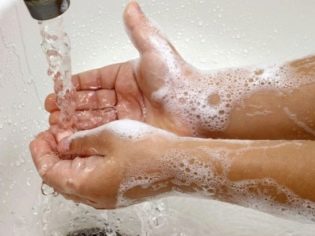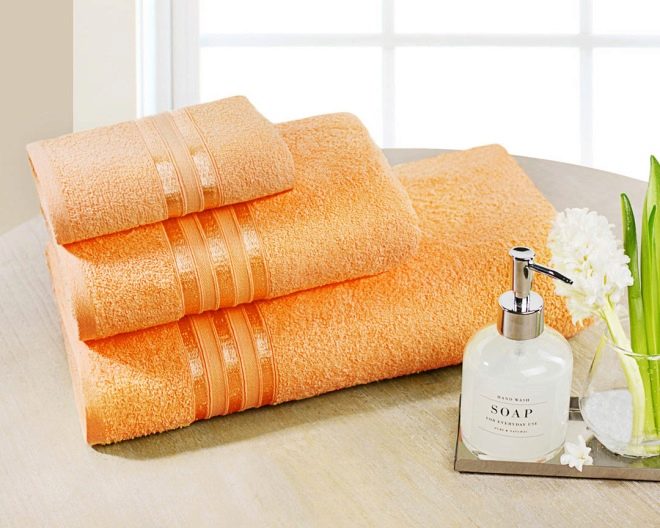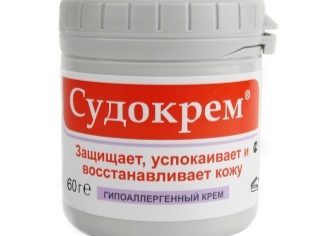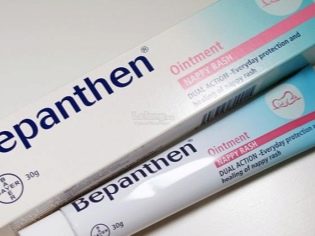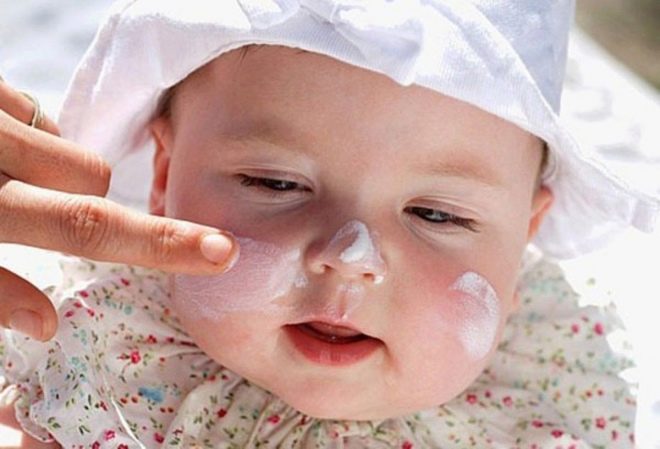Baby skin care
Healthy skin saves the child from many troubles, due to which his state of health and general condition can seriously deteriorate. At the same time, children's skin is tender and very vulnerable. It can attack and bacteria, and fungi, and viral infections. It is with the skin that the baby most often reacts to allergens.
But most often, oddly enough, his own parents, who did not provide proper hygienic care on her, are to blame for the problems with the child’s skin. In this article we will tell you what is the competent care for baby skin.
Age features
The skin of a child who was recently born and an adult’s skin is two completely different skin. For the long months that the baby spent in the womb, his skin almost did not accumulate subcutaneous fat, which is why newborns delight those around him with such a variety of skin tones - from pink to deep red. The fact is that because of the insufficient fatty layer under the skin, the blood vessels are too close to the outer skin layer.
This means that babies are easier than adults to freeze and overheat, they sweat faster. Gentle skin of a baby has such a high permeability that any slight impact on it can cause micro injuries, scratches, cracks, wounds. In fairness it should be noted that such scratches heal much faster than in adults, again because of the proximity to the surface of the grid of blood vessels.
The immunity of babies in the first six months of life is provided by congenital antibodies, which mom generously shared with the crumb. However, by half a year, such immune protection is weakened, and our own is not developed enough. Local (skin) immunity also works with difficulty, and therefore after 6 months the child becomes the most vulnerable, prone to various ailmentsincluding dermatological.
Possible problems
The first few days after the baby’s appearance, the baby’s skin is sufficiently moisturized due to the lipid lubricant that the baby receives at birth to facilitate adaptation to a new environment - anhydrous. The work of the sebaceous glands, which should produce sebum (lipids) is not yet established. And because improper care, for example, too frequent washing with soap or foam can cause mechanical flushing of the lipid layer from the skin. Crumbs' own sebum is not enough to form a new defense, the skin becomes dry.
Dryness creates prerequisites for the development of cracks and abrasions, peeling of the epidermis.
And such damage is an excellent habitat for pathogenic bacteria - streptococci and staphylococci, fungal pathogens. So, only excessive hygienic procedures can cause staph infection, streptococcal skin lesions, mycoses, pyoderma, furunculosis and other unpleasant ailments.
Inadequate hygiene can also play a cruel jokeAfter all, urine and feces in a diaper, which change out of time, lead to the development of contact dermatitis. Sweating, to which all babies are prone, in the absence of adequate hygiene leads to the emergence and development of diaper rash, prickly heat.Aggressive substances that are contained in laundry detergents, household chemicals, and even in chlorinated tap water can cause skin allergic reactions.
Another pressing skin problem is acne in newborns and children in the first six months of life. Maternal hormones, estrogens that the baby "inherits" when born, are to blame for their appearance. Under their influence, the sebaceous glands can begin to produce too much subcutaneous fat, the pores become blocked, and acne appears. For hygiene, this phenomenon is only indirectly related.
If the child is washed too often with soap, then instead of the lipid layer washed away by caring parents, the glands begin to produce even more fat, which also leads to blockage and the appearance of acne.
Parental errors, therefore, when taking care of a baby’s skin, there are only two - insufficient care and excess. That is why it is important to know where the verge of the “golden mean” lies, which will allow to keep the skin of the crumbs healthy, delicate, velvety.
Care procedures
Newborn and baby
The first four weeks of independent life of a child in a new habitat for him are a very crucial period. By and large, the health of the skin is formed at this time.
Parents should understand what effect on the baby’s skin is good and what is harmful.
Microclimate
Avoid excessive sweating, as well as drying of the skin and mucous membranes of the infant will help the right microclimate, which is under the power of all parents, without exception. The skin will be dry and prone to infections where the air is too dry, and the hotter in the nursery, the drier the air in it.
Care must be taken to ensure that the indoor thermometer column does not rise above 20-21 degrees. If it seems to parents that it is cold, then it is better to put the child in an additional shirt, but not to warm the room. Relative humidity at this temperature should be in the range of 50-70%. If these two conditions are met, then the appearance of skin problems in the crumbs becomes unlikely.
Measure the temperature will help the room thermometer, to maintain it - special regulators, valves for the heating system and the battery. Determine the humidity of the air can the device - a hygrometer, and keep it at a given range - a humidifier.
Bathing
Newborns must be bathed. This can be done immediately after the healing of the umbilical wound. It is necessary to bathe the baby in the evening, before going to bed. The optimum water temperature is 37 degrees Celsius.
Use baby soap to care for the scalp of the baby, the body and genitals should be no more than 1 time in 3-4 days. If the baby’s skin is dry, then Soap should not be used more than once a week. The use of herbal infusions and decoctions that moms love to add to the water for bathing, it is desirable to coordinate with the pediatrician, as herbal substances increase the risk of developing allergies.
Bathing water for newborns who have no visible skin problems may not be boiled, but if the crumbs have signs atopic dermatitis, it is prone to diaper rash, allergies, be sure to first boil water to rid it of chlorine, which is used for central disinfection of water supply.
Do not use when bathing baby sponge, sponge. If there is a need, then you can use a special mitten for bathing newborns. It is soft and does not injure the delicate skin of the crumbs.
Clothing and underwear
The clothes of a newborn and a baby up to a year must be sewn of natural fabrics. It is best to give preference to classic cotton. You should not buy bright things, no matter how tempted to do it. Any textile dyes are a potential hazard to the skin of an infant.
It is not necessary for a newborn to buy things with seams from the inside. The stitching of the fabric is very irritating and injuring the skin, “rubbed”. Mechanically affected places become vulnerable to pathogenic bacteria.
Bed linen of the child should meet the same requirements. Mom should wash clothes and underwear only with hypoallergenic baby washing powder. If the baby is allergic, then all clothes that come into contact with the skin should be additionally rinsed in clean, chlorine-free water (you can boil it for this).
Care products
Today, in any pharmacy and children's store, there is a huge selection of skin care products for babies under one year old. Which of them to choose, decide parents, as long as these funds are hypoallergenic. Children under one year do not need shampoo. Also, do not buy a foam bath.
The list of really necessary means is approximately as follows: baby soap (preferably with chamomile or aloe extract), baby powder, cream "Bepanten", Children's cream, massage oil (you can use ordinary vegetable oils - apricot, peach, almond or synthetic petroleum jelly). If you wish, you can purchase "Sudokrem"(For the treatment of diaper rash)," Boro-plus "(to eliminate small rashes and pimples, as well as for treating grazes and scratches).
It is useful to have in the first-aid kit powder and ointment "Baneocin", Which can treat wounds, burns and other skin problems, if there is a likelihood of bacterial infection.
Daily toilet
Daily toilet of a newborn baby should include morning washing with obligatory care of mucous membranes (cleaning the nose, ears, eyes), washing out without soap, rubbing skin folds with wet wipes and, if necessary, processing them with drying or softening agents. It is necessary to wash the baby during the day without using soap after each bowel movement.
When changing a diaper, if it does not have feces, you can simply wipe the child with wet wipes. It is important that the wipes do not contain perfume. In the evening before bedtime, the baby is bathed according to all the rules of evening bathing.
During the day, you need to lay out the newborn naked several times so that the crumb gets air baths.
Children after 1 year
Bathing
Shampoos and bath foams can already be used, but with great care, no more than 1 time per week. It is important to ensure that the child does not sweat. If the toddler came back sweaty from a walk, you should definitely take him to the shower and rinse without soap. Evening bathing is no longer necessary to be carried out in boiled water, the child gladly takes large baths.
The use of herbal decoctions for washing, bathing is allowed for all babies, with the exception of children with allergies and children with asthma. Local immunity will be strengthened if the mother begins to introduce a douche during an evening water procedure.
Care products
Parents can choose any care products for a child older than one year old. Rule one - adult products, even the best and most expensive, are not suitable for a child. Shampoo, foam, body wash, baby soap, moisturizing skin oil - all this remains relevant even after the baby is one year old. In the first-aid kit, you can add dry charges of pharmaceutical chamomile, coniferous essential oils for bathing.
Daily toilet
Daily skin care for a child older than one year includes almost all the same procedures that adults do. This morning washing, washing and washing the feet during the day as needed and evening bathing.
General rules and recommendations
Parents should know the following:
- When rash, spots, blisters appear on the skin, it is important to call the doctor at home to prevent infection. Self-treatment of any skin ailments is prohibited.
- Problem baby skin at an early age in no way can not be lubricated with alcohol and alcohol-based formulations and lotions.Such funds can be metered only after the child reaches adolescence.
- Bactericidal soapwhich is very popular among young parents today, could be dangerous for the skin of a small child, because the antiseptics that are part of it destroy not only pathogenic microorganisms, but also beneficial bacteria that live on the skin. As a result, attempts to protect the baby lead to the development of skin infections.
- A child of any age must have two own towels. One - to care for the skin of the face, the second - a bath. It should have a soft texture.
After washing with towels, do not rub the skin, but slightly blot it. This will maintain sufficient moisture in the skin and avoid micro-injury to the epidermis.
- An adult who cares for a child of any age should be healthy. If his skin has pustules, boils, an extensive rash, signs of a parasitic infection, it is not necessary to carry out hygienic procedures for the child. It is better to entrust it to another adult who is completely healthy. All manipulations with the skin of the child should be done with clean hands, with clipped nails, so as not to injure the baby.
- Washing intimate places should always be carried out under running waterto avoid intestinal bacteria on the skin of the external genital organs and urinary tract. Girls are washed away from the pubis to the anus, boys - somehow, most importantly, without soap.
- All skin treatments with creams and oils should be left in the evening to do this after bathing. The processing rule is one - all that gets wet, you need to dry, and all that is dry - wet. Thus, you can apply several skin care products at once. If there are intertrigoes in the folds, they are “dried” with the help of powder or cream.Sudokrem". But if there are areas of dry skin, they should never be sprinkled with powder - only moisturizers are acceptable (for children, “Bepanten»).
- Any crusts on the head, the body of the child, cannot be removed mechanically. Seborrheic (yellowish) crusts on the head before evening bathing are soaked with vegetable oil and carefully combed out with a child's frequent comb. Crusts on the body, especially those formed after a bursting blister, are the strongest contraindications to the water procedure. Such crusts need first medical examination, because they can be a sign of a staph infection.
- Baby skin need protect from aggressive sunlight. If you are going to have a summer walk by the river, a trip to the sea, then you should definitely choose a cream with UV protection, according to age and skin type. Light-skinned boys - with a higher degree of protection, dark-skinned - with a less high.
- Baby skin should protect from strong wind, from a frost in order to avoid its drying. The baby should be protected from exposure to chemicals, household chemicals, so that the crumb has no access to substances that can injure his skin, cause burns and allergies.
Dr. Komarovsky will tell you about how to process the baby’s skin after bathing in the next video.
